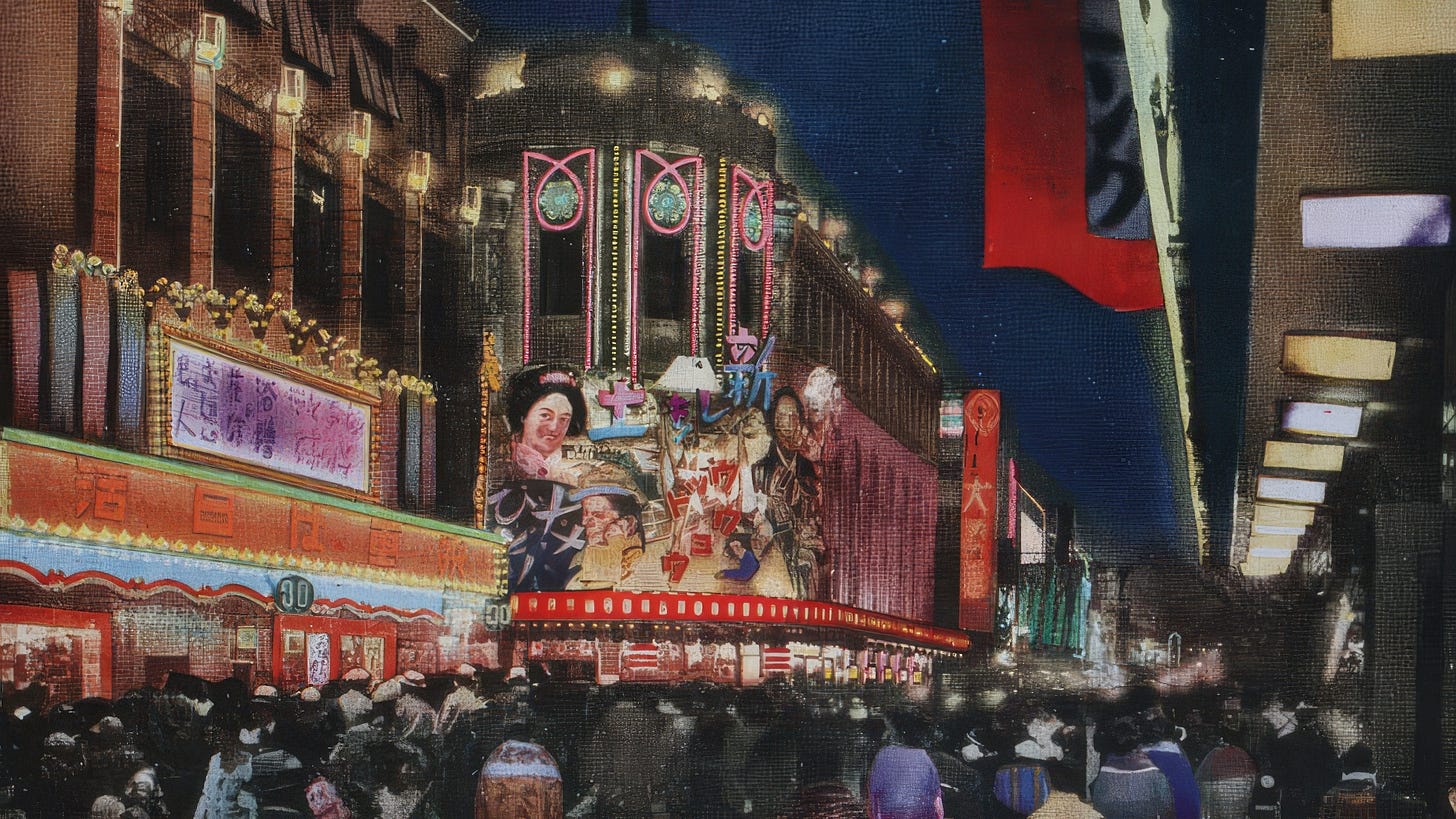Japanese Cinema’s Beginnings and the Visionaries Who Built an Industry
Early Japanese Filmmakers and the Dawn of a New Industry
In this article, I will explore the early 1900s, a pivotal turning point when cinema began to take root as an industry in Japan.
The history of Japanese cinema begins entirely with imports. However, multiple types of equipment were introduced in the same period through different businesses and individuals, and the records of these events rely almost entirely on the memories of those involved at the time. As a result, the full picture remains complex and obscure. Nevertheless, understanding how Japan became one of the major film-producing nations in the world is essential.
The early days of Japan’s film industry can be traced back to the mid-to-late 1890s. In the autumn of 1896, a Kinetoscope was imported into Kobe, marking the beginning of Japanese film history. Around the same time, similar imports were made in Yokohama. By the spring of 1897, Cinématographe and Vitascope were also introduced to Japan.
At the time, Japan had no prior technical knowledge of film projection, so the first screenings began with much trial and error. However, from the very beginning, the Japanese film scene was divided into two major hubs: the Tokyo region and the Osaka region. This division would later have a profound influence on the structure of the Japanese film industry. The leading figures behind the introduction of film equipment and film stock were Japanese students who had studied in the West.
Upon returning to Japan, these individuals brought back film reels and equipment, experimenting with screenings before quickly expanding their operations nationwide. However, technical difficulties and limited access to film stock posed significant challenges, preventing the industry from establishing a firm foundation.
Following this trend, domestic film production also began experimentally. However, this process was equally difficult. One of the key figures who paved the way for nationwide film screenings was Komada Kōyō (駒田好洋) from Osaka.
Over the course of about ten years, Komada traveled extensively across Japan to screen films, and his influence reached almost every part of the country. His screenings became a major event, even in rural villages, where they were eagerly anticipated each year. It is said that his traveling film exhibitions gained immense popularity.
At the time, Japan’s transportation infrastructure was still underdeveloped, and electricity was not always readily available for film screenings. Yet, despite these challenges, Komada dedicated his life to bringing films to the people. His greatest competitor was Yokota Einosuke (横田栄之助) from Kyoto.
The two men had distinct approaches to the film business. Komada was a showman, skilled at staging grand and spectacular screenings, while Yokota had a practical and methodical approach. Both traveled the country with only a handful of film reels, making significant contributions to fostering public interest in cinema. Without their efforts, the Japanese fascination with film might not have developed so rapidly.
Despite these efforts, however, film screenings remained an unstable business. The lack of permanent theaters meant that screenings were mostly sporadic and informal, making it difficult for the industry to generate consistent profits. Many still saw film as an uncertain and impractical business venture.
However, about four years after film technology was introduced to Japan, an unexpected historical event triggered the rise of the Japanese film industry. That event was war.
The Boxer Rebellion in China in 1899-1901 led to increased imports of foreign films from 1902 onward. As film technology improved worldwide, films also became longer, allowing for extended screenings. By 1903, Japan had accumulated a significant stock of films, making it possible to hold month-long or even two-month-long screenings at the same venue. In Osaka, for example, a three-month-long screening season was successfully held between April and June.
This new wave of interest in cinema culminated in October 1903, when Japan’s first permanent movie theater opened near Asakusa Park in Tokyo. However, at this stage, films mostly appealed to children, while adults quickly lost interest after their initial curiosity was satisfied.
For cinema to survive as a sustainable industry, it needed to secure a long-term adult audience. It was at this critical juncture that an event changed the course of Japanese film history: the Russo-Japanese War (1904–1905).
Western film crews traveled to the battlefield to capture footage of the war, but Japan had very few trained cinematographers at the time, and their technical skills were still limited. However, one Japanese cameraman, Fujiwara Kōzaburō (藤原幸三郎), successfully filmed the war and brought the footage back to Japan for public screenings. This completely transformed public interest in film.
For the first time, Japanese audiences could witness war events as they unfolded, creating a new era of cinematic excitement. At this turning point, Yokota Einosuke emerged as a major force in the film industry. Up until then, Yokota had focused on practical aspects of film distribution, but the Russo-Japanese War ignited his entrepreneurial spirit.
Realizing the opportunity, he quickly expanded his operations, recruiting new staff and establishing 11 screening routes across Japan. His business was divided into 11 film exhibition groups, ensuring efficient and widespread film screenings. This strategy generated enormous profits, marking the true beginning of Japan’s film industry as a business.



